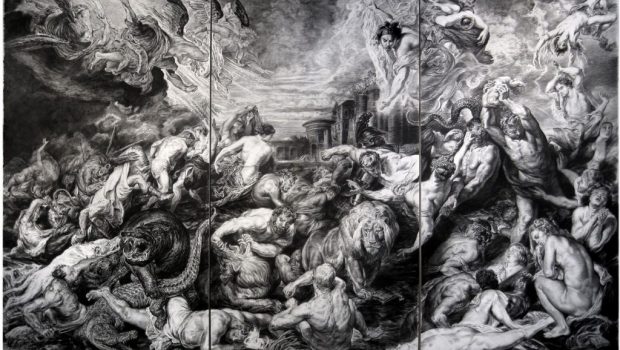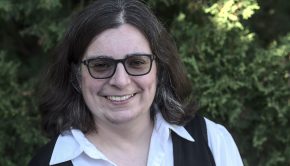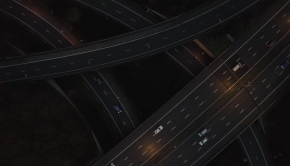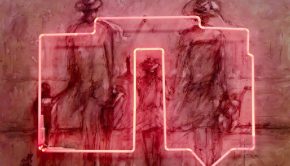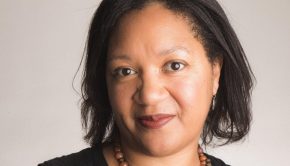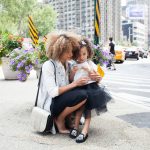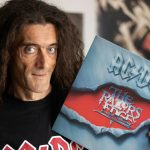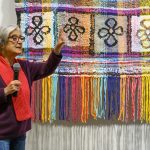Large-Scale Charcoal Drawing Exhibit at Stetson University’s Hand Art Center Explores Perilous Plight of Refugees
Throughout history, people have flocked to areas because of war, government corruption, religious conflicts or natural disasters. The forced displacement of these individuals or refugees continues in the world today.
In 2018, the number of people who had been forcibly coerced to leave their home and country as a result of persecution, violence or human rights violations worldwide reached 70.8 million, according to the United Nations High Commissioner for Refugees (UNHCR). The number of people displaced increased by 2.3 million people from the previous year, a record high.
Artist Rick Shaefer’s reaction to the international refugee crisis is featured in his large-scale, charcoal triptych drawings that portray people of ancient times fleeing by land or water and experiencing the conflicts at borders in three thematic, panel scenes. The gigantic triptychs are created in the baroque-art style and each art piece measures 96″ x 166.”
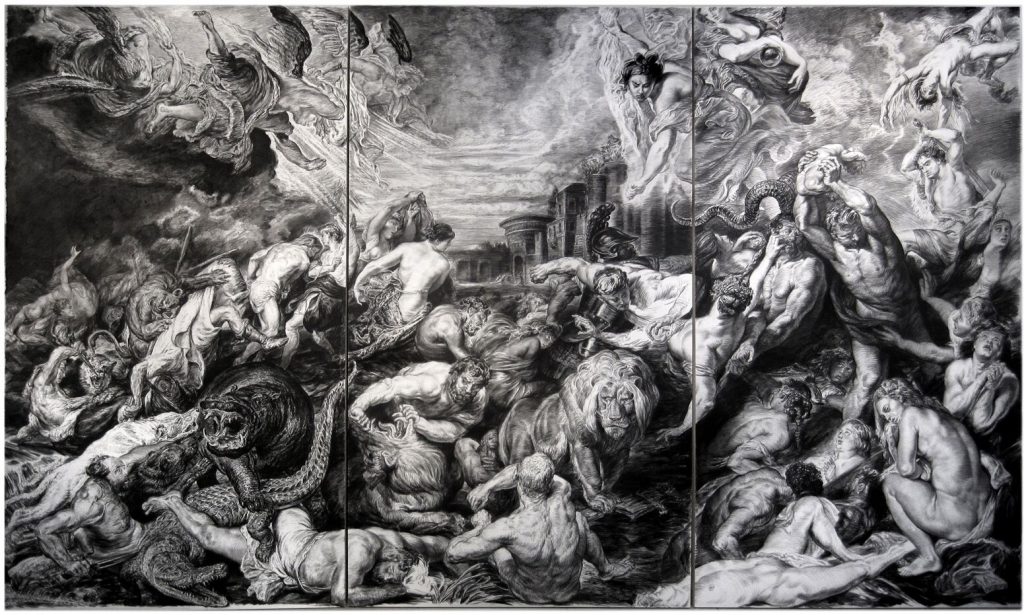
Stetson University’s Homer and Dolly Hand Art Center will display 20 of Shaefer’s charcoal-and-pencil drawings in “Rick Shaefer: The Refugee Trilogy” exhibit, Aug. 16-Oct. 14, with an opening-night reception on Friday, Aug. 23 from 6-8 p.m. Complimentary parking is available in the East Arizona Avenue parking lot off of Amelia Avenue and visitor parking spaces throughout campus. Exhibits at the Hand Art Center are free and open to the public.
Shaefer is inspired by artists Albrecht Dürer, Rembrandt, Peter Paul Rubens and Théodore Géricault. He was influenced by the classic, baroque-art style when creating “The Refugee Trilogy” series. His artwork also pays homage to “The Last Judgment” by Renaissance painter Michelangelo, “Massacre of the Innocents” by Rubens and “The Raft of the Medusa” by Géricault.
“I decided to use a 16th and 17th century vernacular to portray a contemporary crisis because of the turmoil, anguish and agony that’s depicted in paintings from that time period,” explained Shaefer. “We’re used to seeing big-history paintings by Rubens and Géricault, and it’s a familiar language for portraying the stories of migrations that are happening around the world.”
Shaefer’s subject matter is relevant and sparks discussions about the current refugee issue.
“We are seeing more frequently that the visual plays a key role in the way we understand and contemplate issues of refugees and borders,” said Abigail Ramsbottom, coordinator of the Hand Art Center. “Rick Shaefer’s large-scale, charcoal drawing triptychs are beautiful and impactful. His attention to detail and inspiration from art history along with a socially-minded message, focuses on the story of refugees and the reality of human emotion and physical strain.”
Shaefer hopes “The Refugee Trilogy” exhibit raises awareness.
“The Refugee Trilogy” is my personal reaction and statement to feeling overwhelmed by the human horror of the refugee crisis,” said Shaefer. “You can’t escape if you’re in a room with these life-size, charcoal drawings. I felt the drawings were a good way of encapsulating the agony that’s involved in all refugee situations without pounding the drums for any particular situation in a current context. I’m gratified that my artwork will be in an environment where people can react and a catalyst for a larger conversation.”
Shaefer studied photography at the ArtCenter College of Design in Los Angeles and painting at Duke University in Durham, North Carolina. His dad was in the Air Force, which provided his family with an opportunity to travel and relocate many times during his childhood. One of Shaefer’s earliest art memories is doodling when his family lived in England. His mom was an oil painter and took him to museums and felt that early exposure to art, especially the European tradition, was a pivotal point during his art career later in life.
He started using charcoal around eight years ago and loved the medium’s black richness and tonality. His artwork features fine, graphic lines that are similar to etchings, engravings and woodcuts. The large-scale drawings, from the preparatory pencil to charcoal drawings, took six months to complete.
The exhibition, which is organized by the Fairfield University Art Museum in Fairfield, Connecticut, correlates with Stetson’s Values Day on Tuesday, Sept. 24. This year’s theme is “Activism through the Arts.” Values Day is an annual tradition established by Stetson’s eighth president H. Douglas Lee and is celebrated every year in September. It’s a day dedicated to the university’s commitment to its core values, which are personal growth, intellectual development and global citizenship.
Tweet
